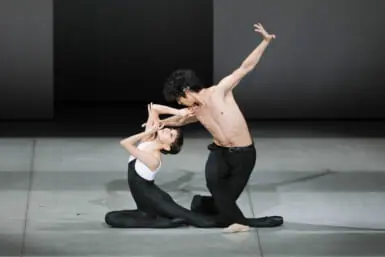by Teresa Cowan
If you’ve ever hung around a school yard long enough, you’d soon discover it’s teeming with a myriad of activities. You know the kind; Ninja Turtles pitted against Care Bears, or someone screaming, “I don’t want to go to school.” (My youngest epitomized the latter category for a while there.)
Somewhere tucked inside this bustling atmosphere are the moms or dads scurrying about their own business. Among parents, the most talked-about enterprise of late has been that of placing one’s child in a school for the fall term. Now, being in that exhilarating yet confusing state of the novice ex-pat, I was left with my mouth hanging open!
Back home, I would never have thought to apply for schools for September this early in the new year. However, most international schools request that applications be returned ASAP.
With this is mind, the Tokyo American Club Women’s Group sponsors an annual Pre-school and Kindergarten Information Day. This year’s roundup was held Jan. 19 and the organizers of this informal introduction to the various schools provided a guideline for parents titled, “What to Look For When Visiting a School.”
Given there are so many mind-boggling factors involved in determining the right school for your child, it’s nice to have a framework to follow. Although the focus is on pre-schools, it is still an excellent structure upon which a parent can apply to any level of education. Below are those aforementioned guidelines along with additional suggestions and explanations from other educators.
What to Look For When Visiting a School
1. Is the school a healthy and safe environment for your child? Are children under adult supervision at all times? Is the building well ventilated and well lit? Is playground equipment securely anchored and safe? Are potentially dangerous chemicals or equipment out of reach?
Plus, given that Tokyo is in an earthquake zone, does the school have food, water, blankets, etc., in the event of a disaster? Furthermore, does the school have alternate evacuation sites in the vicinity? Are there “non-stressful” emergency procedure drills for the staff and students?
2. Is there a wide variety of equipment and materials such as books, art supplies, musical instruments, etc.? Are they intact, in good repair and up to date?
3. Does the school provide nutritious meals or snacks?
4. Are there enough adults to respond to each child individually? What is the child-teacher ratio? According to Dr. F. Roberts (Parent Magazine, February, 1990), “Studies show the most negative impact of class size is felt when classes have more than 35-40 students and the most positive effects result when the teacher-child ratio is 1/15 or less.”
Most pre-schools establish a ratio closer to 1/5, given the very nature of the younger child. However, results in any classroom rely equally as much on the training, experience, dedication and resourcefulness of the teacher.
5. Are the interactions between adults and children frequent, respectful, warm and caring?
6. Are the teachers specially trained in keeping with the school’s philosophy? Can the staff adequately answer your questions about program specifics?
7. Are planned activities appropriate to a child’s age and development; for example, blocks, painting, storytelling, dress-up? For more information on child development, try a series of books put out by the Gesell Institute of Human Development. The series which includes, “Your 1-year-old” through to “Your 4-year-old,” is written by Louise Bates Ames and Francis L. Ilg.
8. Does the school have a consistent discipline policy? Does the policy encourage positive behavior or is it punitive?
9. Is regular communication with parents encouraged? Is there a newsletter or parent committee? Are parents welcome visitors the school?
10. Are parent-teacher conferences scheduled at least once a year? Also, can you request an interview to discuss a child’s progress, accomplishments or difficulties upon request?








